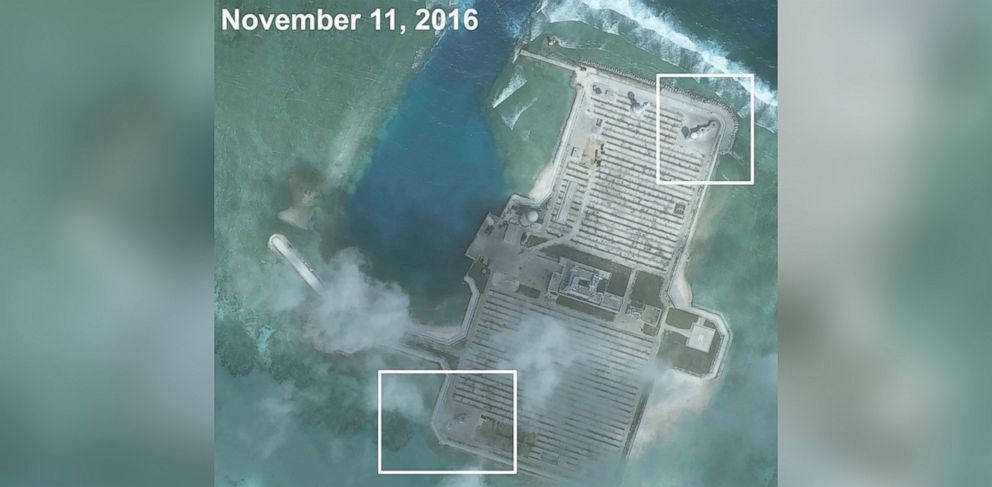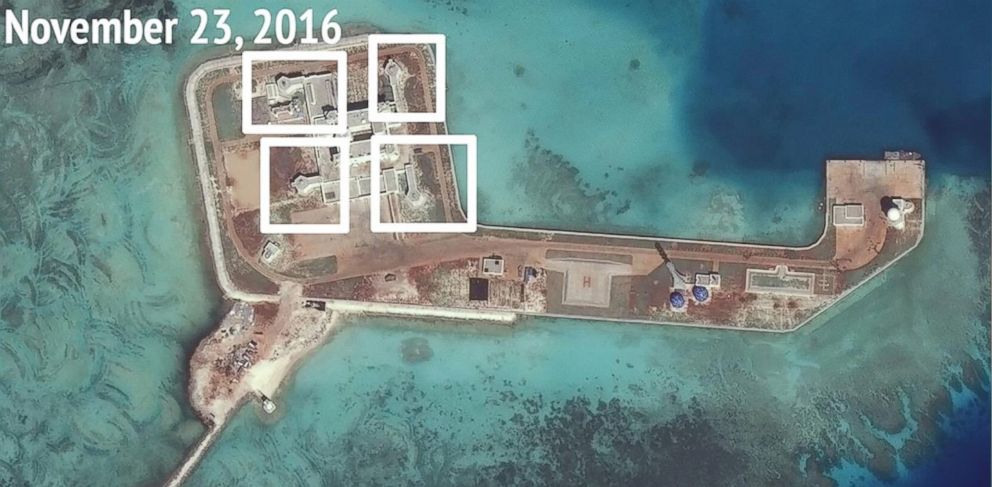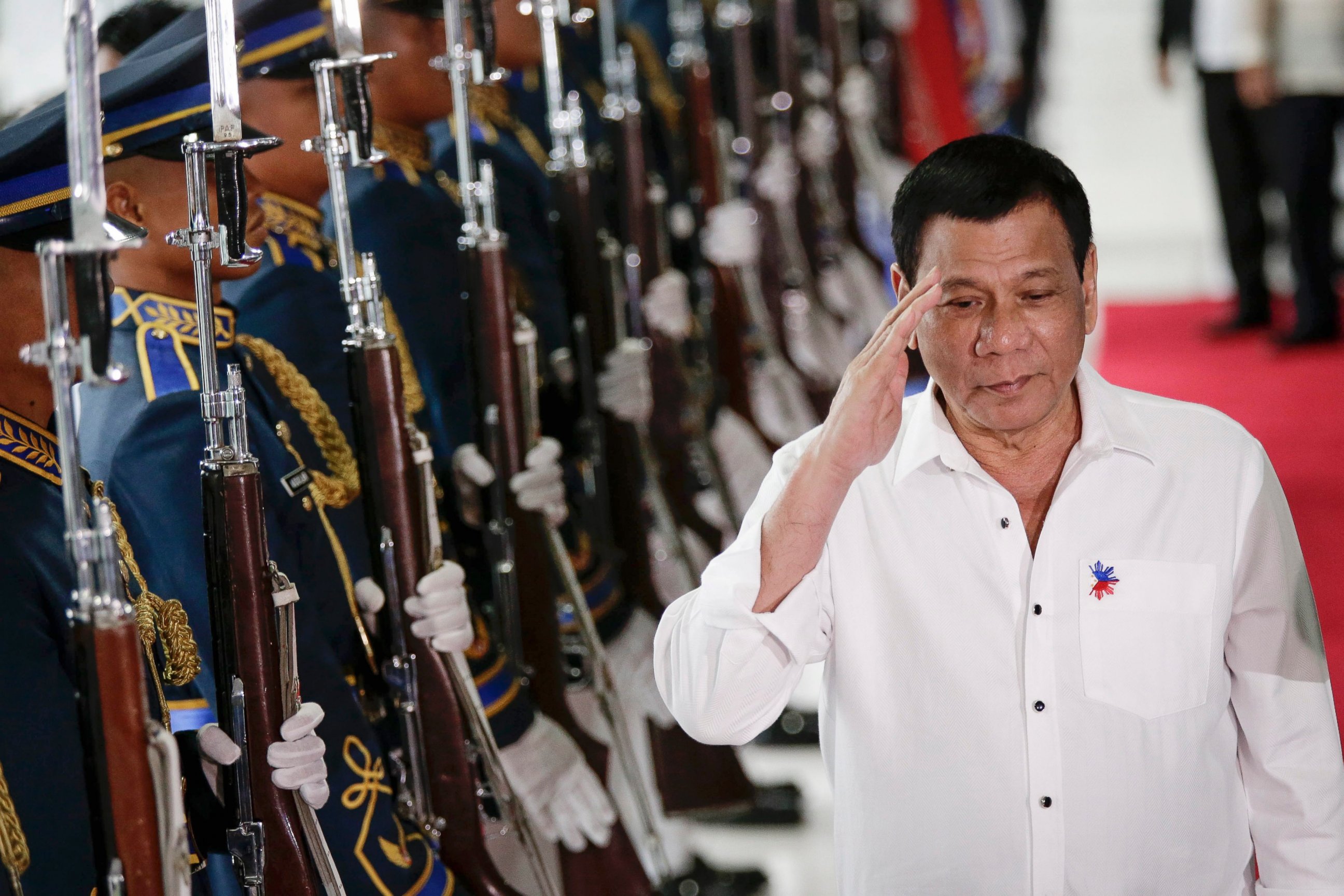What you need to know about tensions in the South China Sea
Rex Tillerson's trip to Beijing brings attention back to the disputed sea.
— -- U.S. Secretary of State Rex Tillerson is to arrive in Beijing on Saturday, the last stop on his trip to Asia that has included meetings in Tokyo and Seoul.
The secretary of state's visits with Chinese officials, including Chinese President Xi Jinping, may have any number of issues on the table, including economic cooperation and countering North Korean provocations. China has vocally criticized the U.S. deployment of the THAAD missile defense system to South Korea earlier this month.
But another topic that will be hard to avoid is heightened tensions in the South China Sea.
The disputed territory most recently drew attention when a Chinese ship seized a U.S. Navy underwater-research drone in the sea in December. The drone was completing a preprogrammed military oceanographic survey route when it was taken. At the time, the State Department said the drone was “absolutely operating inside international waters and it was absolutely performing necessary scientific research, certainly within the bounds of international law.”
China ultimately returned the drone, but the State Department made it very clear that its seizure was "not doing anything to de-escalate tensions" between China and the U.S.
This week, two U.S. senators, Marco Rubio (R-Florida) and Ben Cardin (D-Maryland), proposed legislation that would "sanction Chinese individuals and entities that participate in Beijing’s illegitimate activities in the South China Sea and East China Sea," according to a press release.
“China’s illegitimate actions in the South China Sea threaten the region’s security and American commerce,” Rubio said in the release. “These ongoing, flagrant violations of international norms cannot be allowed to go unchecked, and the sanctions called for in this legislation would put Beijing on notice that the United States means business and intends to hold violators accountable.”
#China’s illegitimate actions in the South China Sea must end. My bill will hold them accountable: https://t.co/REArUa8Aog pic.twitter.com/jMfO3Yp0nT
— Senator Rubio Press (@SenRubioPress) March 15, 2017
The proposed legislation was "extremely grating," Chinese Foreign Ministry spokeswoman Hua Chunying said on Friday, according to Reuters.
The South China Sea has become a focal point for China, the U.S. and other countries in the region.
Here's what you need to know:
What’s going on in the South China Sea?
In recent years, China has been building ports, runways and radar facilities on several manmade islands in the South China Sea.
Some of the latest satellite images of the islands, released in a report from the Center for Strategic and International Studies (CSIS), show that China now appears to have installed large antiaircraft guns and weapons systems as well.

The seven new islands were constructed by dredging sand onto reefs, an effort by China to boost its claim to all of the Spratly Islands in the South China Sea. The Philippines, Malaysia, Vietnam and Taiwan all claim to occupy portions of the island chain.
China’s development in the region is seen as threatening to other nations that occupy territory in the chain of islands to the east of Vietnam and west of the Philippines and Malaysia. This area of the ocean is valuable because it contains fisheries and possible oil and gas reserves.

China had previously committed to not militarizing the controversial manmade islands, but satellite images appear to show evidence to the contrary, according to the CSIS report, raising concerns that China is developing military outposts in the event of conflict.
The Chinese government maintains that the islands are for maritime safety and mainly civilian purposes. In a statement in December, China’s defense ministry called the new defensive measures “appropriate and legal,” according to The Associated Press.
Why does this matter to the U.S.?
The U.S. sees China’s acts as raising tensions in the region and threatening U.S. allies, but senior officials have also said that the U.S. is not taking sides in the territorial disputes between China and other countries in the region.
Former U.S. Defense Secretary Ash Carter repeatedly said that the U.S. does not want to see any country with a claim to the islands militarize the region and that the U.S. will continue to ensure its right of passage through international waters and airspace.
“We will fly, we will sail, we will operate everywhere international law permits in the South China Sea," Carter has said, which is why the U.S. Navy has conducted “freedom of navigation” patrols that sail within the 12-nautical mile territorial limits of some of the disputed islands.
Additionally, an estimated $5 trillion in global trade passes through the region each year.
Carter visited a U.S. aircraft carrier in the South China Sea last April on a trip to India, the Philippines and the Middle East.
#SecDef Carter watches a F-18 take off from the flight deck of @stennis74, currently sailing in the South China Sea pic.twitter.com/PIuMYwg1Sw
— U.S. Dept of Defense (@DeptofDefense) April 15, 2016
At the time, China had recently announced that one of its top military officers had toured the islands in the South China Sea. China said the official was overseeing construction on the islands, including in the Spratly region.
How have other countries in the area reacted to China's construction?
In an attempt to counter Chinese developments on their islands, Vietnam reportedly moved mobile rocket launchers to several of its islands in August, according to Reuters. (However, Vietnam’s foreign ministry called the report “inaccurate.”)
But the president of the Philippines, Rodrigo Duterte, who is trying to mend his country’s relationship with China, has taken a different approach, avoiding inflammatory rhetoric on a particular issue that once divided the two nations: China's taking of the disputed South China Sea's Scarborough shoal in 2012.

The dispute caused the Philippines' previous administration to initiate court proceedings, backed by the U.S., against China before an international arbitration tribunal.
Late last year, Duterte said he would “set aside” the July decision by the tribunal that China could not legally claim most of the South China Sea. The ruling included a rebuke of China’s construction of the artificial islands.
“I will not impose anything on China,” Duterte said.
The Philippines' secretary of foreign affairs, Perfecto Yasay Jr., said the Philippines would also not take action against China in response to the new satellite images, not wanting to heighten tensions between the two countries.
"There is nothing that we can do about that now, whether or not it is being done for purposes of further militarizing these facilities that they have put up,” Yasay said in December of the images.
But the Philippines’ national defense secretary, Delfin Lorenzana, showed more concern.
"If true, it is a big concern for us and the international community who uses the South China Sea lanes for trade," Lorenza said. "It would mean that the Chinese are militarizing the area, which is not good."
ABC News’ Luis Martinez contributed to this report.




